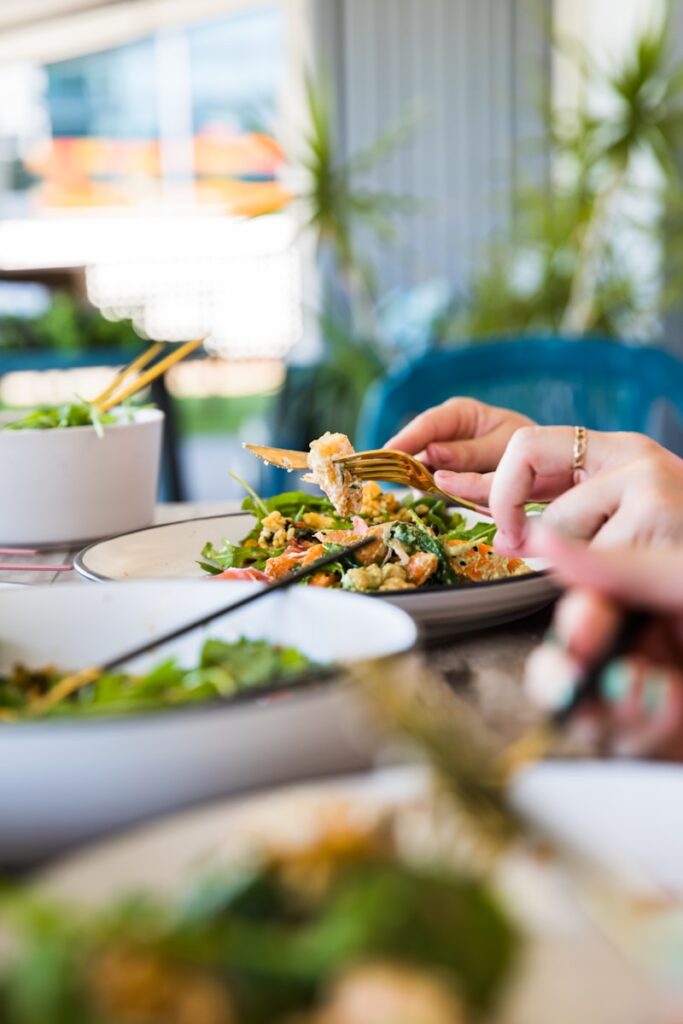Master ‘What Do You Want for Lunch?’ in Spanish: Key Phrases & Tips
Imagine you’re strolling through a charming Spanish plaza, the aroma of sizzling paella and fresh tortillas wafting through the air. Your stomach growls, and you realize it’s lunchtime. But there’s a catch—you need to ask what’s available in Spanish. Suddenly, the phrase “¿Qué quieres para el almuerzo?” becomes your lifeline to a delicious meal.
We’ve all been there, staring at a menu written entirely in Spanish, feeling a bit lost. Whether you’re planning a trip to Spain or just want to impress your Spanish-speaking friends, knowing how to ask for lunch can make your dining experience so much richer. Plus, it’s a fantastic way to connect with the culture and people around you.
Understanding the Basics of Ordering Lunch in Spanish
When in a Spanish-speaking environment, knowing how to order lunch smoothly can enrich your experience. Imagine the satisfaction of confidently asking for your favorite dish in Spanish and seeing the warm smile of your server!
Key Phrases for Expressing Hunger
Expressing hunger in Spanish is fundamental. Use these phrases to communicate your needs:
- ¿Tienes hambre? (Do you have hunger?)
- Estoy hambriento/a (I am hungry)
- ¿Qué hay de almuerzo? (What’s for lunch?)
These phrases help you break the ice and get the conversation going.
Essential Vocabulary for Lunch Items
Knowing basic vocabulary is crucial for understanding menus and making choices. Here are key terms:
- Almuerzo (lunch)
- Comida (food)
- Bocadillo (sandwich)
- Ensalada (salad)
- Sopa (soup)
- Tortilla (omelette)
- Pollo (chicken)
- Carne (meat)
- Pescado (fish)
- Frutas (fruits)
- Verduras (vegetables)
Having these words at your disposal makes scanning a menu much more manageable.
Common Spanish Lunch Foods
Spanish cuisine offers a variety of delicious lunch options. These are some common examples:
- Tortilla de patatas (potato omelette)
- Paella (traditional Spanish rice dish)
- Bocadillo de jamón (ham sandwich)
- Ensalada de atún (tuna salad)
- Sopa de verduras (vegetable soup)
Understanding these typical dishes will help you choose something authentic.
Drinks and Beverages in Spanish
Pairing your meal with the right drink enhances the dining experience. Here’s a quick list:
- Agua (water)
- Vino (wine)
- Cerveza (beer)
- Jugo (juice)
- Café (coffee)
- Té (tea)
Being familiar with these beverages helps you complete your order smoothly.
Basic Sentence Structure for Ordering
To order food confidently, you need to know some basic sentence structures. Here are essential ones to use:
- ¿Puedo pedir…? (Can I order…?)
For example, ¿Puedo pedir una ensalada? means “Can I order a salad?” This structure is handy for making specific requests.
By mastering these basics, you’ll not only satisfy your hunger but also create a richer connection with the Spanish-speaking culture.
Getting Started: Lunch Vocabulary for Beginners
Diving into Spanish lunch vocabulary opens doors to authentic cultural experiences and delicious meals. Whether you’re traveling or just curious, mastering these terms brings vibrant interactions to life.
Essential Food and Ingredient Terms
Begin by familiarizing yourself with essential food and ingredient terms. Knowing these makes ordering straightforward and enjoyable. Here are some key words you’ll encounter:
English | Spanish |
|---|---|
Bread | Pan |
Cheese | Queso |
Chicken | Pollo |
Fruit | Fruta |
Vegetables | Verduras |
Salad | Ensalada |
Soup | Sopa |
Rice | Arroz |
Beans | Frijoles |
Fish | Pescado |
Imagine a scenario where you’re at a local café: “Quiero una ensalada con pollo y verduras, por favor” (I want a salad with chicken and vegetables, please). It’s that easy!
Numbers and Quantities in Spanish
Understanding numbers and quantities helps specify orders and portions. Here are some useful terms:
English | Spanish |
|---|---|
One | Uno |
Two | Dos |
Three | Tres |
Half | Media |
A little | Un poco |
A lot | Mucho |
When ordering, you might say: “Quisiera medio kilo de frutas” (I’d like half a kilo of fruit). Knowing these terms ensures you get exactly what you want.
Simple Phrases for Ordering and Paying
Equipping yourself with simple phrases eases interactions. Common ways to order and pay include:
- ¿Qué quieres para el almuerzo? (What do you want for lunch?)
- Quisiera… (I would like…)
- La cuenta, por favor (The bill, please)
- ¿Cuánto cuesta? (How much does it cost?)
Picture this: after a delightful meal, you confidently ask “La cuenta, por favor”. Not only do you get your bill, but you also experience a smile of appreciation from the staff.
By integrating these terms and phrases into your lunchtime vocabulary, you enrich your dining experiences. Whether you’re enjoying lunch in a bustling mercado or a cozy café, these words help you connect with the Spanish-speaking world authentically.
How to Ask “What Do You Want for Lunch?” in Spanish

Knowing how to ask “What do you want for lunch?” in Spanish isn’t just useful—it’s a gateway to connecting with Spanish-speaking cultures. Ready to immerse? Let’s make it fun and straightforward.
Direct Translation: “¿Qué quieres para el almuerzo?”
The direct translation of “What do you want for lunch?” is “¿Qué quieres para el almuerzo?” Simple, right? It’s like having a reliable go-to phrase in your pocket. Imagine you’re in a bustling Madrid café—knowing this phrase can help you start a conversation and show that you’re making an effort.
Alternative Ways to Ask About Lunch Preferences
Variety is the spice of life, and Spanish offers multiple ways to ask about lunch:
- “¿Qué deseas para comer?” (What do you want to eat?)
- “¿Qué te gustaría para el almuerzo?” (What would you like for lunch?)
- “¿Qué prefieres para el mediodía?” (What do you prefer for noon?)
Each of these phrases adds a touch of nuance. For instance, “¿Qué deseas para comer?” might be more casual, like asking a friend what they’re craving.
Regional Variations of the Phrase
Spanish-speaking regions have their own twists on lunch-related phrases. Here’s a quick guide:
Region | Common Phrases |
|---|---|
Mexico | “¿Qué quieres para comer?”, “¿Qué te gustaría para el almuerzo?” |
Spain | “¿Qué quieres para el mediodía?”, “¿Qué te gustaría para la comida?” |
Argentina, Uruguay | “¿Qué querés para la comida?”, “¿Qué preferís para el mediodía?” |
So, why does this matter? Well, asking, “¿Qué quieres para el almuerzo?” in Argentina might get you a funny look, as “almuerzo” isn’t commonly used there. Knowing these subtle differences aligns you closer with different Spanish-speaking cultures.
Responding to “What Do You Want for Lunch?” in Spanish
Exploring lunchtime in a Spanish-speaking environment opens the door to tasty cultural experiences. Knowing how to respond lets you decide what to eat without any hassle. Here’s how you can confidently express your lunch preferences in Spanish. Ready to immerse?
Expressing Specific Food Desires
Knowing how to state exactly what you want is handy, whether you’re in a restaurant or chatting with friends. You might use:
- “Quiero una hamburguesa” (I want a hamburger)
- “Me gustaría un sándwich de pollo” (I would like a chicken sandwich)
- “Quiero una ensalada” (I want a salad)
Imagine you’re in a bustling café. You scan the menu and everything looks delicious. Craving that juicy hamburger? Just say, “Quiero una hamburguesa.” Simple, right?
Indicating Uncertainty or Flexibility
Sometimes, choosing isn’t easy. Maybe you’re open to suggestions or just can’t decide. In these cases, these phrases come in handy:
- “No sé, ¿qué tienes?” (I don’t know, what do you have?)
- “Lo que tú quieras” (Whatever you want)
- “Me da igual” (It’s all the same to me)
Picture this: You’re with friends, and the choices are endless. You’re easygoing, so you say, “Me da igual.” Now they know you’re fine with any option.
Describing Food Preferences and Dietary Restrictions
Food preferences and dietary restrictions ensure you get something you can enjoy safely. Use these phrases to communicate your needs:
- “Soy vegetariano/a” (I am vegetarian)
- “No como carne” (I don’t eat meat)
- “Tengo diabetes, necesito algo saludable” (I have diabetes, I need something healthy)
Let’s say you’re vegetarian. When asked, you state, “Soy vegetariano.” The host now knows to offer meat-free dishes.
Polite Ways to Decline or Suggest Alternatives
Declining politely or suggesting other options maintains the conversation’s flow. You can say:
- “No, gracias. No tengo hambre” (No, thank you. I’m not hungry)
Maybe you’re not hungry but don’t want to be rude. You respond with, “No, gracias. No tengo hambre,” ensuring politeness.
Easy Reference Table
To keep things simple, here’s a quick reference table of the phrases:
Situation | Phrase | Translation |
|---|---|---|
Expressing a desire | Quiero una hamburguesa | I want a hamburger |
Me gustaría un sándwich de pollo | I would like a chicken sandwich | |
Quiero una ensalada | I want a salad | |
Indicating uncertainty or flexibility | No sé, ¿qué tienes? | I don’t know, what do you have? |
Lo que tú quieras | Whatever you want | |
Me da igual | It’s all the same to me | |
Describing preferences | Soy vegetariano/a | I am vegetarian |
and restrictions | No como carne | I don’t eat meat |
Tengo diabetes, necesito algo saludable | I have diabetes, I need something healthy | |
Politely declining | No, gracias. No tengo hambre | No, thank you. I’m not hungry |
Knowing these phrases enhances your ability to connect and enjoy the culinary delights in any Spanish-speaking environment. How great is that?
Common Challenges and How to Overcome Them
Exploring Spanish lunch conversations can be tricky, especially with regional variations and common misunderstandings. But with a bit of familiarity and practice, you can navigate these interactions confidently.
Dealing with Regional Accents and Dialects
Understanding different accents and dialects in Spain can be a challenge. It’s not just about the words but how they’re spoken. Imagine trying to understand someone from Andalusia for the first time; it can feel like they’re speaking an entirely different language. But here’s the good news: you can overcome this by immersing yourself in these accents. Listen to native speakers from regions like Andalusia or Catalonia. Use resources like YouTube videos, podcasts, or regional TV shows. The more you expose yourself, the easier it’ll get.
Example:
- Listening to Andalusian speaker: “¿Qué quieres para el almuerzo?” might sound like “¿Keh kiwa pa el almuerza?”
- Listening to Catalonian speaker: Notice differences such as “vols dinar?”
Handling Misunderstandings or Confusion
Misunderstandings often occur due to language barriers or cultural differences. Ever felt lost in translation? It’s common. If words fail, use visual aids like menus, or even gestures. Don’t hesitate to ask for clarification with: “¿Puedes repetir eso?” (Can you repeat that?).
Example:
- Using gestures: Pointing to items on the menu.
- Asking for clarification: “No entiendo, ¿puedes mostrarme en el menú?” (I don’t understand, can you show me on the menu?)
Building Confidence in Spanish Lunch Conversations
Feeling nervous or unsure in Spanish lunchtime conversations is normal. The key is to practice. Start with simple sentences and gradually build up. Remember, confidence grows over time.
Example:
- Ordering confidently: “Quiero una ensalada, por favor.” (I want a salad, please.)
- Expressing preferences: “Prefiero algo sin carne.” (I prefer something without meat.)
Here’s a quick reference table to help build your confidence:
Situation | Spanish Phrase | English Translation |
|---|---|---|
Ordering food | Quiero una ensalada. | I want a salad. |
Asking for clarification | ¿Puedes repetir eso? | Can you repeat that? |
Expressing a preference | Prefiero algo sin carne. | I prefer something without meat. |
Indicating uncertainty | No estoy seguro, ¿qué recomiendas? | I’m not sure, what do you recommend? |
Politely declining | No, gracias. | No, thank you. |
Common Mistakes to Avoid

Exploring Spanish lunch conversations can be tricky. Avoid common pitfalls to make your dining experiences smoother and more enjoyable.
Pronunciation Pitfalls in Food-Related Spanish Words
Mispronouncing key words can lead to confusion. Focus on common lunch-related terms to ensure you’re understood clearly.
- Comida (food): Pronounce the “c” with a soft “th” sound, making it “thomida”. This ensures you’re saying “food” correctly.
- Comer (to eat): Similar to “comida”, use “thomer” to correctly ask if someone wants to eat.
Incorrect pronunciation can change the meaning of your sentences. Think of it as the difference between asking for “butter” and “batter” in English – small change, big difference.
Cultural Faux Pas When Discussing or Ordering Lunch
Avoiding these missteps will enhance your dining experience and show respect for Spanish culture.
- Avoid assuming tapas are a specific food: Tapas aren’t a single dish but a way of eating small plates with drinks. Asking what kind of “tapas” they have rather than ordering “tapas” directly shows cultural awareness.
- Understand lunchtime traditions: Lunchtime in Spain is typically from 2:00 to 4:00 PM and is the main meal of the day. If you ask for lunch at noon, it might raise eyebrows.
- Be mindful of siesta: Many businesses close for a two-hour break after lunch. This time is often spent with family. Plan your schedule to respect this tradition.
Misusing Formal and Informal Language in Dining Situations
Mixing up formal and informal language can create awkward situations. Addressing someone appropriately is crucial in Spanish culture.
- Formal context: Use usted (you) and desea (want) to show respect. For example, ¿Qué desea para comer? (What do you want to eat?). Perfect for speaking to someone new or an elder.
- Informal context: Use tú (you) and quieres (want) in casual settings. For instance, ¿Qué quieres para comer? (What do you want to eat?). Suitable for conversations with friends or peers.
Here’s a quick reference table:
Context | Pronoun | Phrase | Translation |
|---|---|---|---|
Formal | usted | ¿Qué desea para comer? | What do you want to eat? |
Informal | tú | ¿Qué quieres para comer? | What do you want to eat? |
By pronouncing words correctly, respecting local traditions, and using the right formality, you’ll make a great impression and enjoy your Spanish dining experiences more authentically.
Conclusion: Mastering “What Do You Want for Lunch?” in Spanish

By now, you’ve got a solid grasp on how to navigate lunchtime conversations in Spanish. With the right phrases and an understanding of cultural nuances, you’re well on your way to making authentic connections.
Remember to pay attention to pronunciation and choose the correct level of formality based on who you’re speaking to. These small details can make a big difference in how you’re perceived.
So go ahead and practice these tips the next time you’re in a Spanish-speaking environment. You’ll not only improve your language skills but also enrich your dining experiences. Enjoy your lunch adventures!
Frequently Asked Questions
What do Spanish people say before eating?
¡Buen provecho! This phrase is the Spanish equivalent of “Bon Appétit” and is commonly said before starting a meal to wish others an enjoyable dining experience.
What do you want to have for lunch in Spanish?
¿Qué quieres para almorzar? This is the direct translation and the most common way to ask someone about their lunch preferences in Spanish.
How do you ask someone what they are eating for lunch in Spanish?
¿Qué hay para comer? This phrase literally means “What is there to eat?” and is commonly used to inquire about lunch plans.
What do you want to eat in Spanish?
¿Qué quieres comer? This is a general way to ask someone what they want to eat, not limited to any specific meal time.
How do Mexicans say enjoy your food?
¡Buen provecho! This phrase is universally used across Spanish-speaking countries, including Mexico, to wish someone an enjoyable meal.






